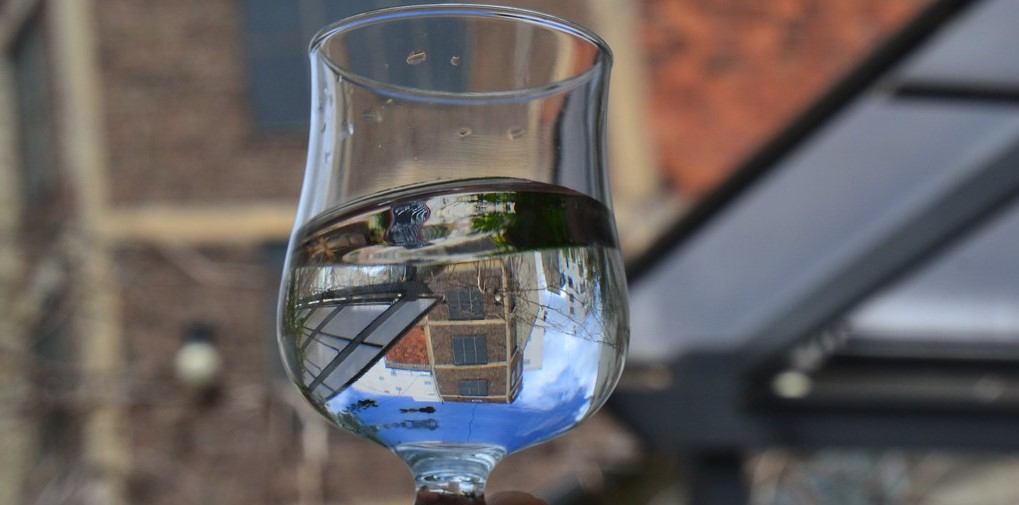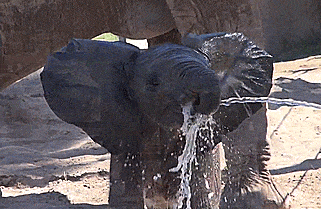Originally posted at: http://www.nerdfitness.com/

Let’s get you up and rolling on a bicycle!
Whether you’re using it for exercise or transportation, biking is a great way to stay active and explore the world around you.
That’s why we encourage it in our Online Coaching Program when we discuss fun exercises!
Here’s what we’ll cover in today’s guide:
- What are the benefits of cycling?
- The 6 different types of cyclists
- How to buy a bike
- How to set up your bicycle
- What gear to purchase for biking
- What to bring on your bike ride
- How to ride a bike
- How to improve your bike riding skills
- Bike riding etiquette for newbies
- It’s time to hit the road (Next steps)
What Are the Benefits of Cycling?

There are a lot of excellent reasons to take up riding bikes:
- It’s a great and healthy way to move from point A to point B.
- It’s free – no gas to put in, no parking spaces to pay for.
- It’s low impact on your body. There are no jarring-impact moments like with running.
- It’s a great place to start with exercise. Sit on bike. Pedal. Done.
- It’s fun!
Cycling has a magical ability to be whatever the rider wants it to be.
Fun, challenging, scary, romantic, social, silly… you name it and there’s a type of cycling for it. You can even change what type you are doing to suit your mood on any given day, which is why most avid cyclists end up with several different bikes.
Some Rebels in the NF Coaching Program have even used cycling as a tool to help them get in shape, as demonstrated by Kyle here:
Note: Kyle also switched up his diet for his result.

The world can use more cyclists, so I’m stoked you’re interested in getting started.
The 6 Different Types of Cyclists

Let’s spend a few minutes thinking about what type of rider you’d like to be.
The below list is not mutually exclusive, mind you. You can flip back and forth, contradict yourself, or mix and match them to suit your own needs.
#1) Mountain Biker

No one loves the outdoors as much as these guys do. If you’d rather ditch the pavement for a trail, mountain biking may be for you.
#2) Roadie

As the name would suggest, these riders are going to be found pedaling down your street. They often wear bright colors to make them easily seen by commuters. If you go this route, you can pretend like you have a sweet superhero costume to wear!
You can take this idea too far.
#3) Track

Track cycling is a racing sport where riders zoom around a velodrome. If you’re a beginner, this is probably too advanced for you, but something to think about as you gain more cycling experience.
#4) Triathlete

A triathlon is a multisport race where participants run, swim, and bike their way to the finish line. They’re not a bad event to train for since you have to condition yourself for a few different sports.
There are many triathlon events designed for beginners, some of which you can check out right here.
#5) BMXer

Generally when people do lots of tricks on their bike, it’s a BMX bike.
BMX is an abbreviation for bicycle motocross or bike motocross and were originally modeled after dirtbikes (minus the engine). They’re popular with kids, but also good for adults who are looking to perform a stunt or two.
#6) Casual Rider

This is, in my opinion, the easiest way to get started.Just do whatever you want to on a bike and enjoy yourself in the process.
How to Buy a Bike

Truth be told, the best bike for you to buy is whatever one you like the best.
I think it’s wise to get a bike shop’s help in buying a bike that fits you. Even though you can adjust your bicycle to fit (more on this next section), it could still be potentially too large or small. Here’s how to find a bike shop in your area.
If you are going to select a bike on your own, you’ll want to consider its height:
- If the bike has a horizontal tube, you should have about one to two-inch clearance from your crotch to the top tube, when standing over the bike.
- If the bike has a sloping top tube, you’ll want at least two-inch clearance.
Shown here from REI’s guide to bike fitting:

Now, bikes do cost money. Expect to spend a few hundred bucks minimum at your bike shop. You don’t have to spend thousands, but you’ll have more fun on a decent bike than a heavy, crappy one from a department store.
If you must buy as cheaply as possible, in my opinion, most people are best served with a steel-framed 80’s road bike. They’re cheap, nearly indestructible, and easy to find on Craigslist.
Don’t be afraid to make counter offers and haggle a bit.

You can also search the bike on Bicycle Blue Book to make sure you’re getting a fair deal.
If you do buy a used road bike, steer away from 27” wheels, since 26” have become standard and will be easier to replace.
Lots of people get mountain bikes for their first bike, and I think it’s a mistake unless you plan on riding through dirt. They are heavy and slow because they’re meant for trail riding on mountains. There’s also a cheaper bike option called bikesdirect.com. They sell off-brand frames with name brand components, and seem to have good customer service. Remember: get the bike you like. If you like it you’ll ride it. Keep that in mind as you’re reading the flame wars and conflicting advice. After all, it’s just bikes. It ain’t rocket surgery.
How to Setup Your Bicycle

While a professional at a bike shop can be a lifesaver when it comes to proper setup, you can totally do it yourself too.
#1) Saddle Height
A “good enough” way to determine proper seat height is the heel-to-pedal method. It might help to have someone hold your bike while doing this.
Take a seat, then have one pedal go completely down in the six o’clock position. Your knee should be completely straight here when making contact to this low pedal.

If your knee is bent, you need to increase the saddle height. If you lose contact with the pedal, lower your seat.
#2) Saddle Angle
For the most part, you’re going to want your seat angled so it’s parallel to the ground. Try this first, then you can adjust it slightly if you find different positions more comfortable.
#3) Handlebar Reach
While handlebar reach can be a bit more personal, in general you don’t want to strain yourself to control the bike.
When seated, you should easily be able to reach the brakes and shifters. Your elbows should have a slight bend, not locked. Adjust your seat first, get that dialed in, then adjust the bars themselves for your ideal setting.
What Gear to Purchase for Biking

After initially purchasing a bike, there are a few other things you should consider.
#1) Helmet – In my opinion, it is imperative to own and wear a helmet when cycling. I don’t think it should be a law that everyone has to, but I think everyone should of his own volition anyway.
What kind of helmet should you buy? Giro, Bell, and Specialized all make good helmets. Try a few on and get a bike shop’s help with how it should fit.
#2) U-Lock – One of the most awesome things about riding bikes to get places is that you don’t have to park a car. You can just ride right up to the place, lock your bike, and go inside. You will need a lock if you’d like your bike to be there when you come out, though. Read up on locking strategy here.
#3) Blinky Lights – Get yourself a good set of blinky lights for your bike.

I like the Blackburn Flea set, but also own the Spok LED light set, and the Planet Bike Superflash rear light. All are fine choices.
Outside has the unmitigated gaul of getting dark without our consent. It’s wise to have lights in these cases, so that you can be as visible as possible on the roadway.
#4) Clippy Shoes – If you’re going to ride often, eventually it’s wise to switch to clipless pedals and shoes. If you’re worried that they’ll make you fall over, rest assured. You will definitely fall over in them at least once. It’s called a zero mile per hour fall, and it’s a rite of passage. It’s also completely worth it.
#5) Lycra – If you’re doing any amount of riding at all, I recommend getting yourself a pair of bibs. Cycling shorts are nice too (they both have a chamois) but bib shorts are the ultimate in comfort.
What to Bring on Your Bike Ride
When setting off on a ride, carry these things:
- A spare tube
- Tire levers
- A CO2 inflate
- A Master Link
- A spare cylinder of CO2
- $20.
Everything except the tube fits nicely into a little canvas bag that can slip into a center jersey pocket, which eliminates the need for a seat bag, which has a tendency to fall apart after a few hundred miles.
Don’t buy an expensive bike tool to carry on your rides. Any repair you can’t do with the above kit is a ride ender. Take a cab with the $20 instead and spend your tool budget on nice tools to keep at home if you want to wrench on your bike.
Also don’t buy a frame pump or mini pump – they don’t work well at all. Get a floor pump for home and carry CO2 with you.
How to Ride a Bike

- Turn pedals.
- Don’t hit anything or fall off.
Kidding.
Here’s exactly how to ride a bike:
Let’s explain some more tips for smooth bike riding:
#1) Use your rear brake to check your speed and your front one only if you really want to stop. If you grab a handful of front brake on a modern bike it might become a catapult.
#2) Remember when I said clippy shoes were worth it? It’s because they allow you to apply power throughout the whole revolution of the pedal, and to use your whole leg and butt to apply said power. They’re awesome.
#3) Keep in mind also that it’s more efficient to spin than to mash. This means that you’ll be able to deliver more power for longer if you ride in a smaller, easier gear at higher cadence (RPM) than in a bigger, harder gear at slower cadence. Ideal cadence is said to be 90rpm or so, which is the exact tempo of Cake’s song The Distance.
One foot should make a revolution for each beat of the song, or in other words, your foot is a quarter note. Your other foot will be offset, of course, so as a pair your feet will play eighth notes. And you didn’t even know you were a musician!
#4) Your body should be pretty much still when you’re riding. Your knees should be in line between your hip and ankle, not out as if you’re trying to climb a pole:
How to Improve Your Bike Riding Skills

Cycling is beautiful and amazing, but the best cycling is also social.
Having some friends who are into it will help keep you into it. Mind you, it is ten buh-jillion times easier to meet people who already like things you want to do than to convert people you already like into doing something new.
So, go do your local group ride. There’s guaranteed to be a beginner one near you that runs out of a bike shop. Ask at the bike shop once you feel comfortable returning.
Yay for socializing!

You can also check out Meetup for a riding group.
Bike Riding Etiquette for Newbies

There’s a tendency for new riders to want to express their liberation from the metal cage of the automobile through a certain free-spirited attitude toward traffic laws.
Please don’t do this.
Whatever we do while riding in traffic will be remembered by every driver who sees us and counted either for or against cycling as a whole in that driver’s mind.
Many new riders adopted a Me-Vs-Cars attitude, and it’s always a mistake.

Figure out what the laws regarding cyclists on the road are in your area and follow them always! Google “bicycling laws + [ your state ]”
You’ll also have a much easier time in traffic when you ride like traffic.
It’s Time to Hit the Road (Next Steps)

Above all, remember that cycling is a fun, social activity.
Wave to other riders. Say hello to them when you pass them. They’re nice folks! Well, except “serious” roadies, of course, but only other roadies listen to them!
Okay, that’s about it for this guide.
Find a bike, wear a helmet, and get ready to roll:

If you want to continue your journey with Nerd Fitness, there are three great options for you.
Option #1) If you want a professional coach in your pocket, who can do video form checks, provide feedback, and adjust your workouts based on the equipment you have available, check out our Online Coaching Program!
Some of our clients are avid cyclists and their coaches design workouts around their biking schedule:
2) Exercising at home and need a plan to follow? Have questions you need answered? Join Nerd Fitness Prime!
Nerd Fitness Prime is our premium membership program that contains at-home exercise routines, live-streamed workouts with NF Coaches, a supportive online community, group challenges, and much more!
Option #3) Become part of the Rebellion! We need good people like you in our community, the Nerd Fitness Rebellion.
Sign up in the box below to enlist and get our Rebel Starter Kit, which includes all of our “work out from home” guides.
- The 15 mistakes you don’t want to make.
- Full guide to the most effective diet and why it works.
- Complete and track your first workout today, no gym required.
Have fun out there, and ride safe, cycling friend!
-Steve
###
photo, photo, photo, photo, photo, photo, photo, photo, photo, photo, photo, photo, photo




 Let me guess. You’ve been on keto for 5-6 months and enthusiastically thinking this is how you’ll finally wrangle your sugar cravings into submission! You’re loading up on healthy fats, avoiding grains, and ditching highly processed, high-carb foods. Yet there’s that incessant nagging. You know, the one that tells you that life is too short not to indulge in that giant Costco muffin or the more paleo-friendly version, another square (or three) of dark chocolate.
Let me guess. You’ve been on keto for 5-6 months and enthusiastically thinking this is how you’ll finally wrangle your sugar cravings into submission! You’re loading up on healthy fats, avoiding grains, and ditching highly processed, high-carb foods. Yet there’s that incessant nagging. You know, the one that tells you that life is too short not to indulge in that giant Costco muffin or the more paleo-friendly version, another square (or three) of dark chocolate.
 Across much of the world, movement restrictions are lifting, businesses are reopening, and gyms are coming back. While the next few weeks may paint a different picture, and cases are going up in many areas, many places now are seeing better overall trajectories. Deaths are down, which could be a lagging indicator and thus subject to a potential skyrocket. But for now, for better or worse, the gyms are opening.
Across much of the world, movement restrictions are lifting, businesses are reopening, and gyms are coming back. While the next few weeks may paint a different picture, and cases are going up in many areas, many places now are seeing better overall trajectories. Deaths are down, which could be a lagging indicator and thus subject to a potential skyrocket. But for now, for better or worse, the gyms are opening.
 Today we’re taking a peek under the hood and looking at some of the hormones involved in hunger and satiety, a.k.a. appetite hormones.
Today we’re taking a peek under the hood and looking at some of the hormones involved in hunger and satiety, a.k.a. appetite hormones.


























 Avocados and avocado oil had a slow road to popularity, starting with a rebranding of sorts. There’s a bit of an internet debate around the origin of the word avocado. Some reports say that it came from the word ahuacatl, which is Aztec slang for testicle. As the fruit became more popular, that association wasn’t great for marketing, so farmers changed the name to “avocado” and even petitioned dictionary publishers to update the entry.
Avocados and avocado oil had a slow road to popularity, starting with a rebranding of sorts. There’s a bit of an internet debate around the origin of the word avocado. Some reports say that it came from the word ahuacatl, which is Aztec slang for testicle. As the fruit became more popular, that association wasn’t great for marketing, so farmers changed the name to “avocado” and even petitioned dictionary publishers to update the entry. 
 For now classes are 6pm and 640pm at 2840 Wildwood st in the Boise Cloggers studio.
Book your class NOW!
click this ==>
For now classes are 6pm and 640pm at 2840 Wildwood st in the Boise Cloggers studio.
Book your class NOW!
click this ==>








